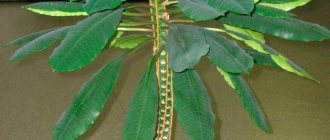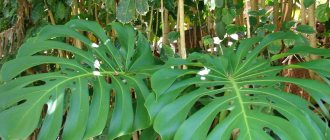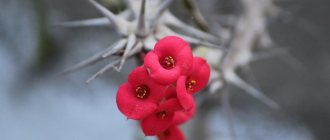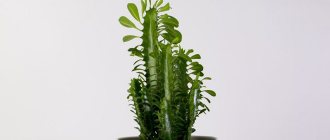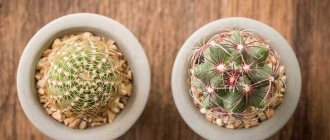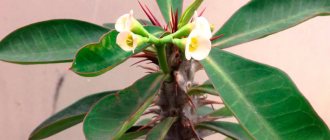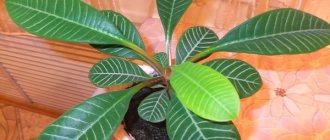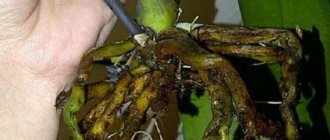Euphorbia (Euphorbia) is an annual or perennial plant of the Euphorbia family. In total there are about 2000 species, very diverse in shape, size, habitat, and growing conditions. A common characteristic of euphorbias is a white, viscous sap that resembles milk. A special feature of milkweed is that the juice in its stems and leaves is under pressure, so if the integrity of the plant is damaged, the juice comes out quickly and in large volumes.
Source: depositphotos.com
In the middle zone, the most common spurges are sungazer, cypress, vine, garden spurge, white-veined spurge, etc.
The chemical structure of milkweed is poorly understood, however, it has become widely used in folk and homeopathic medicine as an immunomodulatory, antiviral, antifungal, antibacterial, antiseptic, and antitumor agent. Used in alternative therapy for oncological, gynecological, gastroenterological, nephrological, neurological diseases, immunodeficiency conditions, and skin diseases.
The main medicinal raw materials are milkweed grass and roots; tinctures, decoctions, and juice are made from the plant.
Despite the popularity of milkweed in folk treatment, it is necessary to remember that it is extremely toxic. The main danger is the milky juice, which contains powerful toxins euphorbin and saponin, which have a locally irritating and cauterizing effect.
How does milkweed poisoning occur?
If it comes into contact with the skin and mucous membranes, a burn from milkweed juice occurs; if the juice or parts of the plant get inside, it causes poisoning. The following situations may pose a danger:
- replanting or pruning an ornamental house plant;
- working with weeds in the garden (some types of milkweed are classified as weeds);
- independent preparation of medicines from milkweed or use of homemade products;
- eating the leaves or stems of the plant;
- playing with plant parts for children.
Can you keep it at home or not, and why is it sometimes not possible?
Euphorbia can be kept at home, but away from small children and pets.
It's sad but true: most houseplants are toxic to cats. There is even such a thing as “chronic poisoning.”
Your pet may feel great for many years and not show any signs of illness, but at some point its health deteriorates sharply, and the animal begins to fade before our eyes. This is a cumulative effect.
The best types for home maintenance and care for them
Since the variety of species is quite wide, let’s consider the most popular ones for home keeping:
- Euphorbia polychroma;
- Euphorbia pulcherrima;
- Euphorbia myrsinites.
Rules for caring for milkweed:
- These types of milkweed are best kept at room temperature (15°C to 25°C); in winter, the room temperature should not fall below 12°C.
- Since the plant is light-loving, it should be kept on the windowsill, avoiding direct sunlight, as it can cause burns.
- The plant, like any succulent, requires moderate watering.
- Dry air will be preferable to humid air, although humidity is not particularly important for milkweed.
- Be sure to place drainage at the bottom of the pot, otherwise the roots may rot.
Lovers of indoor flowers always try to surround themselves with pleasant and interesting plants. Previously, geraniums and violets were very popular on windowsills. Today you can increasingly find milkweed of all types and forms.
With proper care and precautions, it will bring you only positive emotions
Symptoms of poisoning and burns with milkweed
When accidentally or intentionally ingesting parts of the plant or juice, severe toxic gastroenteritis develops, the symptoms of which are:
- headache, dizziness;
- pain and burning along the esophagus;
- intense abdominal pain;
- nausea, vomiting, diarrhea;
- bloating.
Symptoms of poisoning appear 8-12 hours after eating milkweed. Beginning with a dyspeptic disorder, as the disease progresses it becomes general. Against the background of vomiting and diarrhea, dehydration develops, manifested by severe weakness, dry mouth, thirst, decreased blood pressure, increased heart rate, followed by a rare thread-like pulse.
When toxins are absorbed into the systemic bloodstream, toxic damage to the central nervous system occurs: convulsions, confusion, apathy, disorientation, increased body temperature, and in severe cases, coma may develop.
The plant poses a great danger to people suffering from allergic diseases, as it can cause severe reactions, including Quincke's edema. Its clinical manifestations are swelling of the soft tissues of the face, pharynx, difficulty breathing and swallowing. An allergic reaction to poisoning with the milky juice of milkweed can be lightning fast.
When milky juice gets on the skin, a violent local reaction develops. At the site of contact, the skin turns red, severe itching, burning, local swelling, and rashes appear.
If milkweed juice splashes into the eyes, a sharp burning pain appears, swelling of the eyelids, visual acuity decreases, active lacrimation occurs, the conjunctiva becomes inflamed (becomes hyperemic, swollen), pinpoint ulcerations may appear, and sometimes it becomes impossible to open the affected eye. Blindness may develop, and in severe cases, permanent blindness.
When juice gets on the oral mucosa, hyperemia, numbness and swelling of the lips and tongue, profuse salivation, burning and soreness in the throat occur.
Source: depositphotos.com
Signs depending on the type of flower
There are signs associated with certain types of plants. Thus, white-veined euphorbia, like Crassula, attracts wealth, triangular euphorbia is capable of absorbing any negativity.
mile
This is a perennial branched shrub with a ribbed gray stem, the leaves are located at the top. Euphorbia Mila is distinguished by orange, yellow and red bracts.
According to signs, this is an ideal plant for girls who want to preserve their innocence before marriage. It will protect a woman from unworthy suitors and help her find true feminine happiness. The bush should not be placed in the spouses’ bedroom, so as not to provoke conflicts and not attract health problems and troubles.
The flower will help people with chronic diseases. Thanks to its strong energy, it enhances the body's protective functions and improves mood.
Trihedral
Euphorbia triangular is a perennial shrub characterized by thick, triangular stems of dark green color. They are covered with burgundy thorns, and the thick leaves are shaped like a spatula.
This flower protects all residents of the house from external negative energy. Its juice is also poisonous, so it should be kept away from children and pets (cats, dogs). Other signs indicate that the triangular shrub, due to the abundance of thorns, can provoke family quarrels. It should not be placed in a recreation area. The best place is in the hallway, so that the function of protecting the house from ill-wishers is fulfilled.
How does begonia give a sign of the machinations of ill-wishers?
White-veined
The plant is similar to a palm tree, has a colab-shaped shape, a ribbed trunk, and has large rounded leaves.
According to signs, Euphorbia Belozhilata brings peace, prosperity, protects the house from dark forces, helps resolve conflict situations, and protects from the evil eye and damage.
First aid for milkweed poisoning
When taking milkweed orally you should:
- provide the victim with physical and psycho-emotional peace;
- take enterosorbents (Activated carbon 80-100 g of aqueous suspension 2-3 times a day, Enterosgel 1 tablespoon 3 times a day);
- take a saline laxative (Magnesium sulfate);
- drink alkaline non-carbonated mineral water, milk or slimy drinks (barley water, jelly).
If milkweed juice gets on your skin, you must wash your hands with soap and water several times, apply ointment with anesthesin or burn remedy, and take an antihistamine tablet (Suprastin, Claritin, Zyrtec, Erius). Do not touch the mucous membranes with hands stained with milkweed juice.
If milky juice gets into your eyes: rinse your eyes with running water, chamomile decoction, drip drops with an antiallergic component (Dexamethasone, Maxidex, Allergodil), take an antihistamine tablet (Suprastin, Claritin, Zyrtec, Erius).
Popular varieties
The most popular species for cultivation are those described below.
Akalifa
This shrub is highly branching. Its elongated, feather-like leaf plates have carved, jagged edges. Flowering begins in March and continues until late autumn. The species is demanding on watering and air humidity.
Akalifa
Canary
This is a large tree that can grow up to 10 m in height, even in indoor conditions. In appearance, the plant resembles a cactus without thorns. There are small bumpy seals on its ribs.
Canarian
Bupleurumofolia
A unique succulent with a small amount of foliage growing exclusively at the top. Its stem part is covered with small tubercles.
bupleurumofolia
Thorn
Spine is a variety with blunt ribbed edges, white-gray needles and vestigial leaf blades. Shrub growth accelerates in diffuse sunlight.
thorn
Enopla
Enopla is distinguished by a variety of sharp, burgundy-colored spines that widen at the base. Over time, these needles turn gray: the older the succulent, the darker its spines.
enopla
Large-rooted
This euphorbia has a large, massive root system, bumpy, pimply, modified light green shoots. Its skin is covered with double small thin needles.
large-rooted
Cypress
Cypress is a miniature indoor subshrub that can grow up to 30 cm in length. The straight branches are covered with narrow lanceolate leaves; bright yellow inflorescences bloom on their upper parts.
cypress
Bluish
Bluish is a fast-growing species, reaching up to 1.5 meters in height. This spurge has long, erect stems, the leathery surface of which is covered with a dark blue coating that resembles wax. The shoot has absolutely no leaf plates, instead there are dark brown spines.
bluish
Cereus-shaped
This succulent subshrub has a relatively small height of up to 1 m. The plant has erect branches covered with multiple dark green ribs, small, quick-drying leaves that remain in this form for several years.
cereus-shaped
Jellyfish head
The head of the jellyfish has a shortened stem, as well as amazing numerous branches radiating in different directions, which resemble the tentacles of a jellyfish. Often such spurge is planted in a hanging pot.
jellyfish head
Globular
This species grows in small colonies resembling balls (up to 50 cm in diameter). Short cylindrical leaves are located on short stem shoots. This milkweed prefers shaded light.
globular
Fisher
Fischer's is a perennial that has received the unusual popular name “peasant root” due to its healing properties. Substances with antibacterial activity were found in the root.
Fisher
Large-horned
The succulent is distinguished by three-ridged branches with deep grooves, a wing-shaped ribbed edge, covered with a continuous dark gray horny edge. From March to September the plant needs bright daylight.
large-horned
Prevention
To prevent milkweed poisoning, you must:
- take measures to ensure that small children do not come into contact with milkweed;
- do not prepare medicines containing milkweed juice at home, do not take homemade preparations of this plant;
- do not exceed the dosage and do not change the treatment regimen on your own when taking products containing parts or juice of the plant;
- carry out all gardening work wearing personal protective equipment (gloves, goggles).
Is it possible to get poisoned by the juice of the plant?
Summarizing everything written above, we can confidently conclude that indoor spurge can lead to serious human poisoning.
This only applies to cases of misuse of this plant and its ingredients. You can be poisoned by milkweed in the following cases:
- in case of violation of safety precautions for preparing medicines;
- when taking medicines based on the plant not in accordance with the instructions;
- if recommended dosages are exceeded during therapy;
- due to accidental contact of juice on the skin, mucous membranes, or inside the human body.
Attention! Despite the fact that indoor spurge can cause poisoning, it is a medicinal plant. Its juice is often used in folk medicine to treat a large number of diseases.
In small quantities and when properly processed, milkweed extract can even be beneficial . First of all, it affects the effective cleaning of blood vessels. A tincture made from this plant is a good tonic and invigorating. It is most often used by people who are not sensitive to caffeine.
Dried milkweed leaves may be useful in the treatment of gastrointestinal diseases. It helps to get rid of constipation of various etiologies.
Euphorbia is not only a beautiful and useful plant, but in some cases it is also a dangerous plant. That is why it is best to work with it with gloves. The place where the pot with it is located must be protected from both animals and children.
